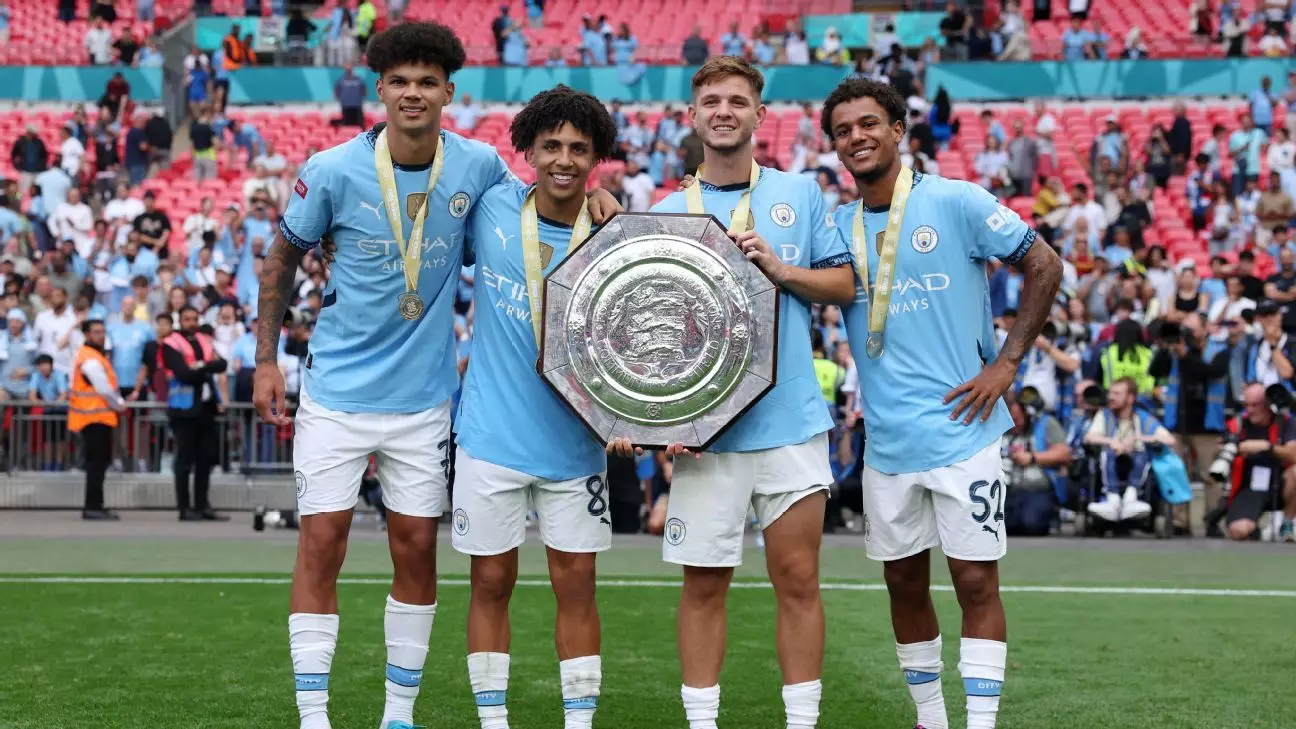Since the Abu Dhabi takeover in 2008, Manchester City has undergone a remarkable transformation, both on and off the field. The club, once struggling to compete, is now a heavyweight contender in European football, largely thanks to its investments in facilities and talent development. Prior to these changes, however, young players aiming to don the City jersey faced a significantly different reality. Thomas Krucken, the current director of the youth academy, vividly recalls the earlier years when resources were scant, and innovation was paramount to nurturing talent.
Krucken’s tenure began as a foundation phase coach, responsible for the development of players aged 5 to 11. He reminisces about a creative approach that was more out of necessity than luxury. For instance, to aid in developing young players’ coordination, he crafted training tools out of birdcage sticks sourced from a pet shop—a clear reflection of the club’s resourcefulness at the time. Such anecdotes serve as a stark contrast to the cutting-edge facilities now available at the City Football Academy (CFA), which epitomizes the shift from humble beginnings to state-of-the-art excellence.
Now situated next to the iconic Etihad Stadium, the CFA stands as a symbol of Manchester City’s commitment to youth development. With top-tier training facilities and partnerships with local educational institutions like St. Bede’s College, which typically involves significant tuition fees, the academy is designed to nurture young talent holistically. While the infrastructure has seen immense upgrades, the core mission—to produce professional footballers—remains steadfast.
“Our ethos is unchanged,” Krucken asserts. “While we’ve advanced technologically, our objective of crafting players capable of thriving in the Premier League hasn’t wavered.” His return to Manchester City, after a stint at VfB Stuttgart, positions him at the helm of one of Europe’s leading talent factories.
Currently, the spotlight shines brightly on academy graduates such as Phil Foden, whose journey from youth prospect to English football’s player of the year underscores the academy’s effectiveness. However, Foden’s story is just one of many. The recent preseason match against Celtic showcased the depth of City’s youth production, as nine academy graduates took to the pitch, displaying the promising pipeline of talent ready to break into the first team under Pep Guardiola’s guidance.
With Guardiola at the helm, Manchester City’s approach to integrating young talent into the first team has radically evolved. The Spanish tactician emphasizes a philosophy where young players are ingrained with the principles of play from the onset, allowing for a smoother transition to senior football. This progressive mindset is evident in the inclusion of players like Rico Lewis and James McAtee in critical fixtures, illustrating the manager’s willingness to trust the academy’s output.
Guardiola has made it clear that he does not differentiate between a player recruited for a hefty transfer fee and a homegrown talent. His commitment to giving chances to young players highlights a significant cultural aspect within the club that encourages internal competition, allowing the most deserving talents to seize the opportunity. As McAtee himself remarks, the academy equipped him with the necessary skills and tactical understanding to flourish when given the chance, embodying the potential reward for those who persevere.
Despite the glowing narratives surrounding City’s youth setup, the journey for many young prospects can be fraught with challenges. The constant influx of high-profile signings creates an environment where competition is fierce, requiring academy graduates to consistently outperform their peers to earn a shot at first-team action.
Players like Oscar Bobb have expressed the duality of excitement and apprehension about competing at such a high level. Faced with the reality that a big-money signing could eclipse opportunities, the stakes are undeniably high. Nevertheless, they acknowledge that this environment fosters growth and resilience, key traits in their development.
Furthermore, while many academy players will not don the City first-team jersey, they are often able to leverage their training and experience into successful careers elsewhere. The club’s adeptness at facilitating transfers for those who fall short of breaking into the elite ranks is noteworthy. Recent transfers have garnered impressive fees, supporting the financial health of the academy and enabling further investment in player development.
As Manchester City looks to the horizon, their academy remains a linchpin in its broader strategy. With a focus on anticipating future game demands, Krucken emphasizes the importance of preparing young players for a rapidly evolving football landscape. He believes that the ability to adapt to the game’s increased pace is critical, as the club aims to produce players who can flourish not just today, but in a decade’s time.
The academy’s legacy continues to unfold, and while the pathway to professional football may be treacherous, the rewards for those who thrive are substantial. As Manchester City strives for Champions League glory, the nurturing of young talent will remain an integral part of their blueprint, ensuring the club’s identity is not just tied to big signings but also to the homegrown stars that emerge from its ranks.
